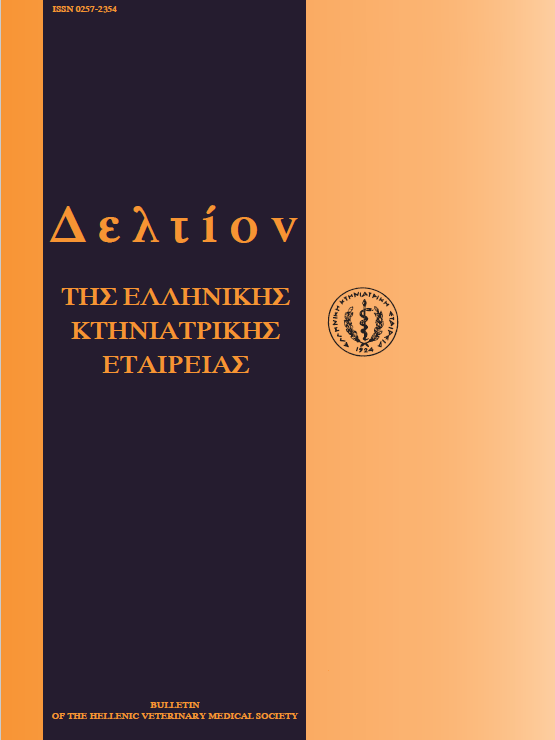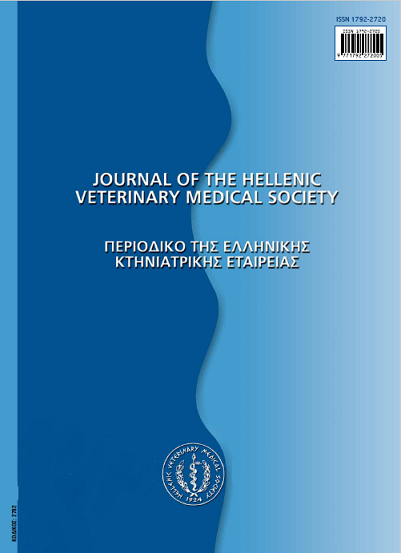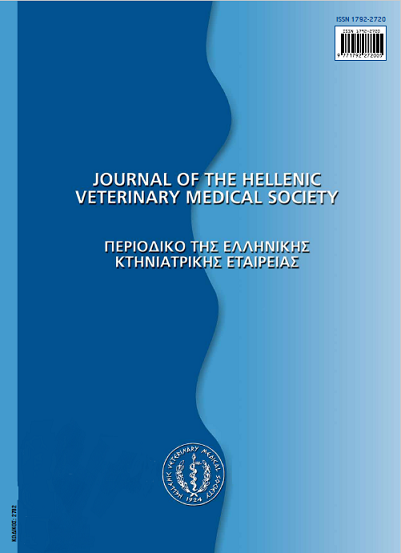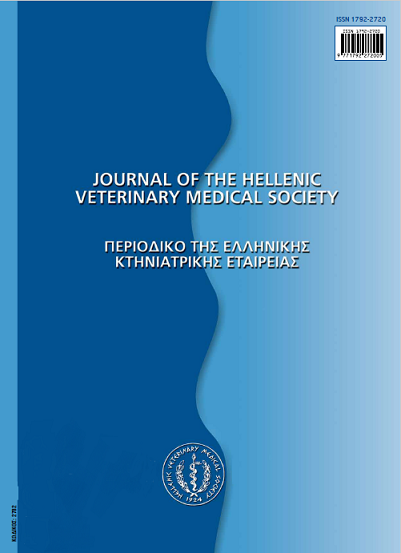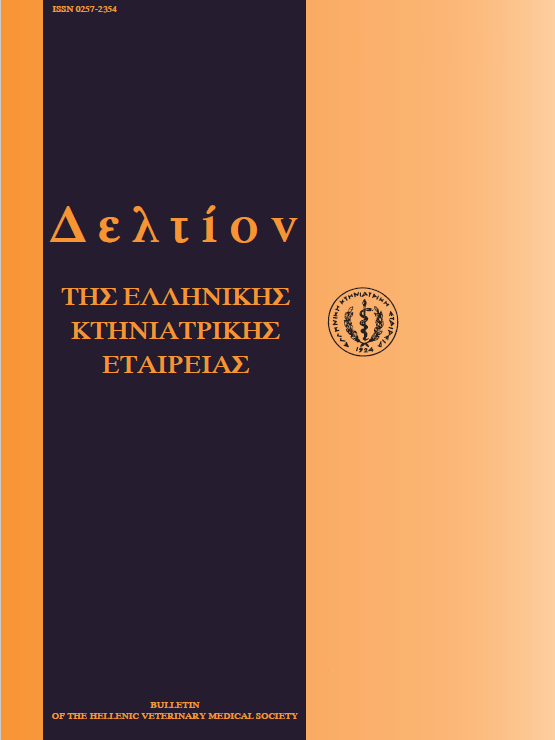Chronic or atrophie masticatory myositis in the dog. A report of two spontaneous cases
Abstract
Two young adult dogs (case 1: German wirehaired pointer male, case 2: mongrel female) were admitted to our Clinic because of a progressive, bilateral and symmetrical atrophy of the masticatory muscles, that was most obvious in the temporal muscles. No signs of mandibular dysfunction were detected in both animals. The clinical diagnosis of chronic or atrophic myositis was confirmed by the histopathology of temporal muscle biopsies, which revealed the typical of the disease lesions, such as myofiber degeneration, regeneration and atrophy, interstitial or perivascular cellular infiltrates, chiefly of lymphocytes and plasma cells plus perimysial fibrosis. Temporal muscle electromyography, done only in case 1, showed abnormal spontaneous activity indicating myositis. The use of prednisolone at immunosuppressive doses, with or without azathioprine, not only stopped the progression of the disease but resulted in a partial restoration of the masticatory muscle mass.
Article Details
- How to Cite
-
KOUTINAS (Α.Φ. ΚΟΥΤΙΝΑΣ) A. F., VAMVAKIDIS (Χ. Δ. ΒΑΜΒΑΚΙΔΗΣ) C. D., POLIZOPOULOU (Ζ. ΠΟΛΥΖΟΠΟΥΛΟΥ) Z., LEKKAS (Σ. ΛΕΚΚΑΣ) S., & GEORGIADIS (Γ. ΓΕΩΡΓΙΑΔΗΣ) G. (2018). Chronic or atrophie masticatory myositis in the dog. A report of two spontaneous cases. Journal of the Hellenic Veterinary Medical Society, 50(1), 53–58. https://doi.org/10.12681/jhvms.15698
- Issue
- Vol. 50 No. 1 (1999)
- Section
- Case Report

This work is licensed under a Creative Commons Attribution-NonCommercial 4.0 International License.
Authors who publish with this journal agree to the following terms:
· Authors retain copyright and grant the journal right of first publication with the work simultaneously licensed under a Creative Commons Attribution Non-Commercial License that allows others to share the work with an acknowledgement of the work's authorship and initial publication in this journal.
· Authors are able to enter into separate, additional contractual arrangements for the non-exclusive distribution of the journal's published version of the work (e.g. post it to an institutional repository or publish it in a book), with an acknowledgement of its initial publication in this journal.
· Authors are permitted and encouraged to post their work online (preferably in institutional repositories or on their website) prior to and during the submission process, as it can lead to productive exchanges, as well as earlier and greater citation of published work.

